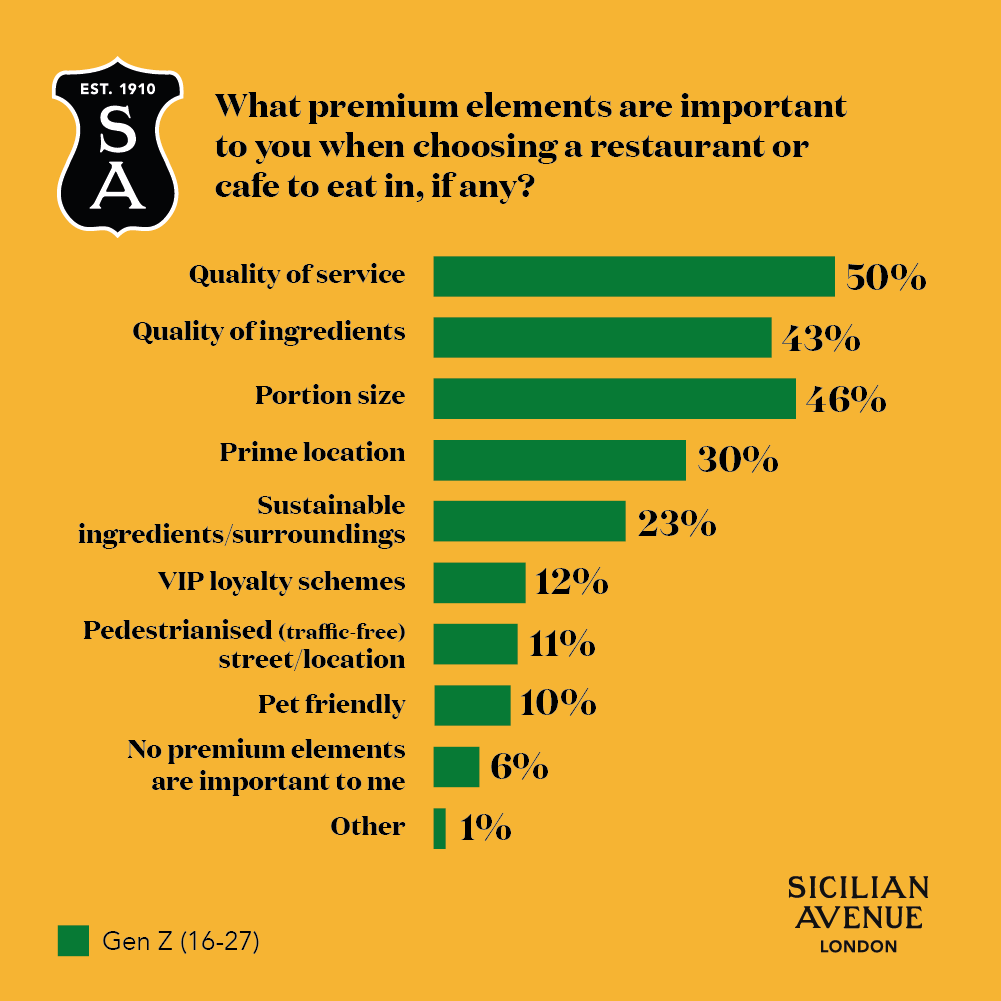Research suggests that the younger generation’s dining preferences differ markedly from their older counterparts.
From favoring pedestrianised spaces to prioritising portion value, Gen Z is quietly revolutionising London's restaurant landscape, bringing fresh perspectives that could transform how the capital eats.
This younger generation's appetite extends beyond just the food on their plates – they want an experience that aligns with their values and lifestyle preferences. New research commissioned by Tristan Capital Partners reveals that Gen Z diners (ages 13-28) are especially concerned with the atmosphere a restaurant is in with 64% preferring restaurants in pedestrianised areas, indicating that dining away from traffic is a more pleasant experience. This shift ought to prompt savvy restaurant operators to seek out car-free zones for their new ventures, as locations like Bloomsbury’s newly restored Sicilian Avenue become increasingly attractive for their combination of pedestrian access, tik-tokable moments and proximity to transport hubs.
Like their Millennial counterparts (ages 29-44), Gen Z diners place a high priority on quality of service in restaurants, with 50% citing service as their number one priority. But when it comes to other dining elements, Gen Z stands apart: for example, while other generations focus on ingredient quality, 46% of Gen Z diners place portion size at #2 on their priority list – the highest among any age group. This pragmatic approach to value, combined with a strong preference for car-free dining spaces, may signal a fundamental shift in what makes a restaurant attractive to younger diners.

The research also reveals that Gen Z is most likely to visit central London early-to-midweek, bucking the traditional weekend dining trend. Monday through Wednesday sees significantly higher Gen Z presence compared to other age groups, with 45% visiting on Mondays and Tuesdays, and 47% on Wednesdays. This redistribution of dining traffic throughout the week may prompt some eateries to rethink their operating schedules.
The influence of social media on Gen Z's dining choices is evident in their attraction to specific brands such as Smashburger, which sees 29% Gen Z patronage compared to a 19% average. However, this generation's impact goes beyond following viral food sensations – they're actively shaping a new dining culture that values experience, accessibility, and atmosphere. This shift in dining preferences signals a broader change in how young people interact with urban spaces, suggesting that successful restaurants will need to consider not just their menu, but their entire environmental context to attract Gen Z foodies.
As London evolves as a food capital, the restoration of Sicilian Avenue – one of London's first pedestrianised streets, dating back to 1910 – demonstrates how historical spaces can be reimagined for modern diners. Balancing authenticity, atmosphere and sustainability within a car-free environment, the Avenue is uniquely positioned to satisfy Gen Z's desire for experiential dining.